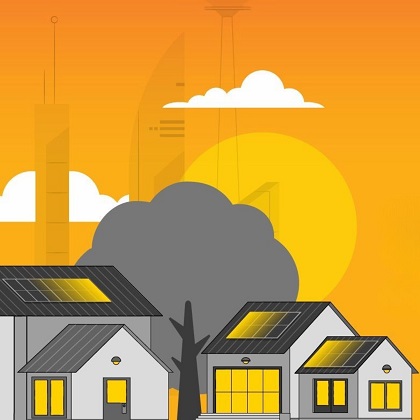By: Ilana Koegelenberg
South Africa finds itself at a critical juncture in its energy transition, where the promise of abundant solar resources collides with regulatory complexity and policy inconsistencies. Despite significant growth in the renewable energy sector, new research warns that overregulation threatens to undermine progress and potentially trigger another energy crisis.

GoSolr, the country's largest residential solar provider, has released its fourth annual "Light Paper", highlighting the structural and regulatory barriers hampering South Africa's solar adoption. The findings paint a picture of a nation blessed with world-class solar resources but constrained by bureaucratic obstacles that favour existing power structures over energy independence.
According to GoSolr CEO Andrew Middleton: “South Africa has made progress in renewable energy adoption; however, we run the risk of going backwards. Our research shows that while other countries are accelerating their solar transitions, we are being held back by a tangle of regulations that penalise, rather than encourage, solar adoption.”
To discuss the paper's findings in more detail, Middleton addressed the media at a June roundtable event held in Johannesburg, which Sparks Electrical News also attended.
The current energy landscape
The numbers GoSolr presents in its Light Paper tell a compelling story of both progress and stagnation. Solar power has experienced explosive growth, with the industry expanding fivefold from 2021 to the present, the company estimates. From virtually nothing five years ago, solar now represents 11% of South Africa's energy mix when the sun shines, making it the country’s second-largest form of power generation after coal.
However, this growth must be viewed against sobering realities. Coal still dominates at over 74% of the energy mix, while only approximately 137,000 homes have solar installations – a mere fraction of the country's nearly 17 million households. The industry adds roughly 1,000 new residential installations monthly, a pace that Middleton describes as insufficient given the scale of opportunity.
The loadshedding paradox
The apparent improvement in loadshedding masks deeper systemic issues. Eskom's Energy Availability Factor (EAF) – the percentage of generation capacity actually available – sits at approximately 57%, well below the utility's 70% target. More troubling, recent data shows performance declining back towards crisis levels.
"We're about 4% above EAF levels during a crisis year in 2023," Middleton notes, emphasising that the current reprieve from loadshedding isn't due to Eskom's improved performance but rather the six to seven gigawatts of alternative energy sources added over the past four years. "Every gigawatt is a stage of loadshedding. When industries add six gigawatts up, that's six stages of loadshedding that have been avoided."
This dependency on alternative energy sources to maintain grid stability makes the regulatory obstacles facing the sector particularly concerning.
Tariff complexity and cost concerns
Perhaps nowhere is the regulatory confusion more apparent than in electricity tariffs. The National Energy Regulator of South Africa (NERSA)'s recent approval of a 12% average tariff increase for Eskom customers represents just one layer of complexity. More significant are the proposed changes to tariff structures, particularly the dramatic increases in fixed charges.
The disparities between municipalities are striking. While Cape Town proposes a fixed charge of R390 per month and Eskom direct customers face R423, Johannesburg's proposal reaches R1,650 – a figure Middleton describes as "not cost-reflective at all" and more about "recouping lost revenue" than covering actual grid connection costs.
These high fixed charges create perverse incentives, effectively subsidising high-energy users at the expense of low-consumption households. "Higher income earners might end up being cross-subsidised by lower income earners," Middleton warns, noting the correlation between household income and power consumption.
The move towards time-of-use tariffs, while directionally correct, lacks the reciprocal benefits that would make the system fair. "If consumers are getting charged at the peak, they should be able to sell at the peak if they've got solar or backup," argues Middleton, highlighting the absence of meaningful feed-in tariff options in most municipalities.
Cape Town stands as a notable exception, having successfully reduced bi-directional meter costs by more than half, making feed-in tariffs viable for residential users. This demonstrates that municipal-level solutions are achievable when there's political will to make them work.
Unfortunately, while some municipalities show progress, national policy has moved in the opposite direction. Beyond complex tariff structures, new barriers are emerging that threaten to stifle the sector's growth entirely.
Import tariff challenges
Chief among these is the import tariff challenge. GoSolr opposes the recently introduced import tariffs on solar panels and proposed tariffs on other equipment, arguing they're revenue-focused rather than genuinely aimed at building local industry. While supporting local manufacturing in principle, Middleton argues that production incentives (hiring incentives, plant construction incentives) would be more effective than import tariffs. Without meaningful local manufacturing capacity, the tariffs simply increase solar costs and create barriers to renewable energy adoption.
These regulatory barriers stand in stark contrast to the approaches taken by international leaders in solar adoption.
**Read the full story in the Sparks Electrical News July edition (page 12), available online here.